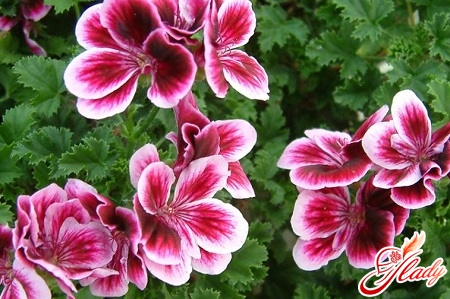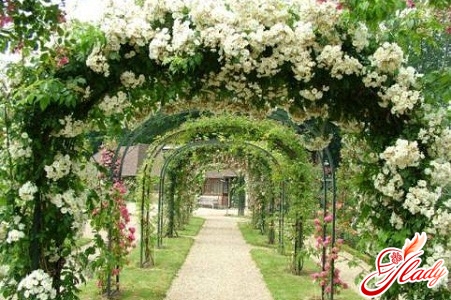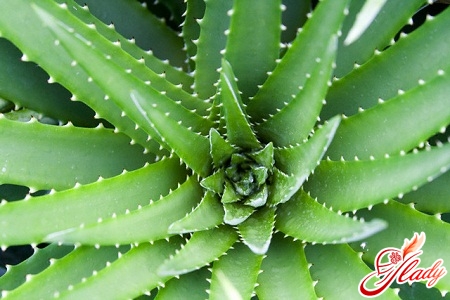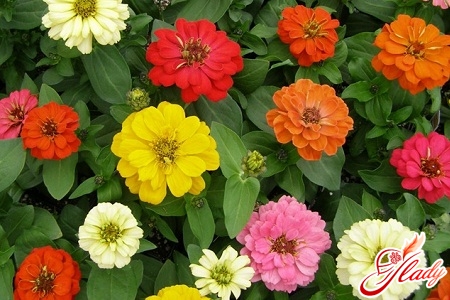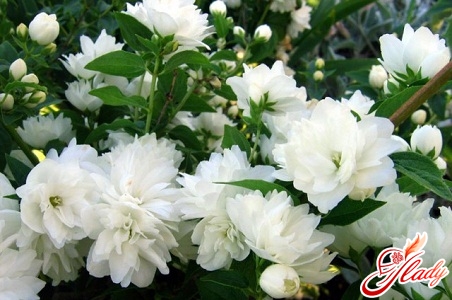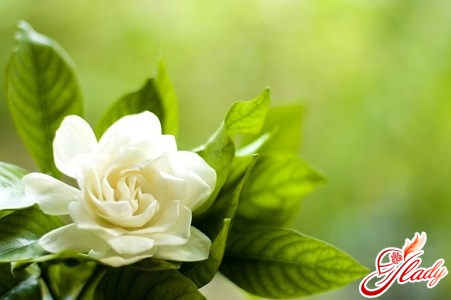 Not so long ago we had a fashion for a giftflowering potted plants. And what? A great alternative to bouquets of cut flowers! And that's why many people, not experienced in floriculture, become owners of unusual, rare, and sometimes exotic houseplants. And among them, the gardenia is jasmine-like. Of course, it's nice to receive a flower-strewn bush as a gift. But often the donated gardenia does not last very long. At first she pleases us with her chic look and scent, and then the flowers fall off, the leaves first turn yellow, then turn black, and the flowering shrub gradually perishes. And how to save it? Is it difficult to care at home for such a beautiful, but capricious specimen? Can it be multiplied? Do I need to change it? And anyway, what kind of plant is this? Let's figure it out.
Not so long ago we had a fashion for a giftflowering potted plants. And what? A great alternative to bouquets of cut flowers! And that's why many people, not experienced in floriculture, become owners of unusual, rare, and sometimes exotic houseplants. And among them, the gardenia is jasmine-like. Of course, it's nice to receive a flower-strewn bush as a gift. But often the donated gardenia does not last very long. At first she pleases us with her chic look and scent, and then the flowers fall off, the leaves first turn yellow, then turn black, and the flowering shrub gradually perishes. And how to save it? Is it difficult to care at home for such a beautiful, but capricious specimen? Can it be multiplied? Do I need to change it? And anyway, what kind of plant is this? Let's figure it out.
Gardenia as a species
Gardenia, which was distributed asroom culture, belongs to a large family of madder. At home, as a rule, grow jasmine gardenia, although the family of these plants includes about three hundred species. In the wild, gardenias grow in the subtropical forests of Japan and China, and they received their name after the name of the British doctor and botanist of the eighteenth century, Alexander Garden. Cultivated gardenia bushes and gardens, where they grow to a height of 1.5 meters. But at home, jardinia gardenia, also known as the Gardenia of Augustus and the Cape Jasmine, does not exceed a height of fifty centimeters. At the same time, indoor gardenias retain decorativeness even without flowers, but with proper care they can blossom all year round. And the flowers that cover the bush are simply chic - whitewashed white or with a yellowish tinge, large enough and exuding a delightful scent! Usually the bush is covered with numerous single flowers, but sometimes they are collected in lush inflorescences. The bush itself, even without flowers, preserves decorativeness. The shoots are smooth and strong, and the glossy dark green leaves with stipules are located opposite. Crown gardenia can be formed independently, periodically cropping the plant and giving it the shape of a lush bush or a small tree. In domestic floriculture, several varieties of gardenia jasmine are distributed, differing in the size of the bush, the shape of the flowers, and the time of flowering.
- Gardenia Veitchii has double terry flowers of white color. Particularly prized for flowering in winter.
- Gardenia Makino or Radicans also has double fragrant flowers.
- Gardenia Kleim's Hardy is appreciated for its miniature sizes and flowers with a wax coating.
- Gardenia Variegata is characterized by double colors and yellowish specks on the leaves.
- Gardenia Fortuniana (Fortuna) has large enough flowers, similar to a camellia.
- Gardenia First Love blooms from the beginning of spring until the end of summer. Has very large cream-white flowers with a strong aroma and can bloom repeatedly.
- Gardenia Flore Pleno also features large double flowers.
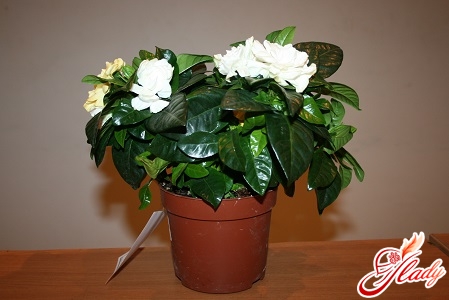
Gardenia Care
Gardenia jasmine belongs to quitecapricious house plants, which require special conditions for flowering, and attentive care. Nevertheless, caring for gardenia is not very difficult, if you know the requirements for their cultivation and maintenance. The first necessary condition for the comfortable existence of gardenia at home is lighting. These flowers need bright lighting throughout the year. Therefore, it is best to have flowerpots on the western and eastern windows, and in the winter time to provide gardenias with additional lighting. They are illuminated by fluorescent lamps, which are about fifty centimeters above the bushes. Additional lighting is also required for those gardenias that are located on the northern windows. Despite the love of the bright light of gardenia, the jasmine does not tolerate direct sun, so it must be shaded, protecting from sunlight. It is very important to regulate the illumination during flowering and budding of gardenia. If at this time the plant is rearranged from place to place or even turns the bush by different sides to the light source, then the gardenia will discard the buds. The buds and flowers fall and in the absence of light. Proper care for gardenias requires a certain temperature regime. In the warm season, the temperature in the room with gardenias should not be below 22 degrees. With the onset of autumn, the temperature should be lowered to 18 degrees and maintained throughout the cold season. It is also important that in winter the night temperature does not fall below 16 degrees. This temperature regime is necessary for laying flower buds. If the gardenia will winter in a warm room (with a temperature above 21 degrees), then with the onset of spring, it may not bloom. And the necessary condition for flowering gardenia - the same temperature of the soil and air. With a temperature difference, the plant often does not have flowering. The flowering of gardenias is affected not only by lighting and temperature, but also by the watering regime. It is the regime, since proper care implies more or less abundant watering during the vegetation and rest period. In autumn and winter, gardenias are watered more than moderately. In autumn it is necessary to wait for the complete drying of the upper layer of soil in the pot and only two days after that water the plant, and in winter the intervals between waterings increase. Approximately from the second half of March or a little later, watering becomes more abundant, but still remains moderate and spicy. This regime is maintained until the end of spring, and then gardenia begins to water abundantly and often: once the top layer of the soil has dried. Water gardenias with settled weakly acid water, the temperature of which should be slightly above room temperature. When drying the soil and lack of moisture in gardenia, the leaves turn yellow and yellow. Care of the gardenia during budding and flowering includes maintaining high humidity. Spray plants can only be before the opening of buds. If you spray a flowering bush, dirty brown spots appear on the petals. And to increase the humidity of the air, you can put a flower pot in a tray filled with moistened peat or claydite. Gardening is in need of periodic top dressing. For example, young bushes fertilize every two weeks, alternating mineral and organic top dressing. Care for adult gardenias includes weekly fertilizing with calcium-free fertilizers. However, gardenia should be fertilized only during the vegetation period, because at other times, with excess in the soil of mineral substances, the gardenia wilt and fall off the leaves. 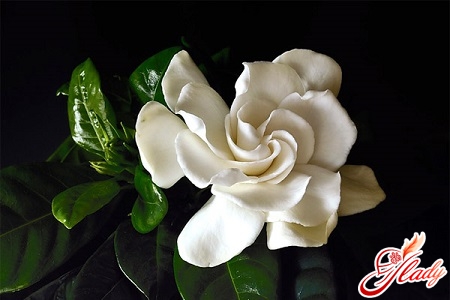
Transplanting, pruning and reproduction
Room gardenias need pruning. This is necessary both to maintain the ornamentation of the bushes, and for a good growth of gardenias. Pruning is carried out immediately after flowering, shortening the weak and thickening shoots by half. If during the growing season to pinch young shoots, it will stimulate the growth of lateral branches and the bookmark of flower buds. By the way, the cuttings left after pruning can be used for propagation of gardenias. It is propagation by cuttings (in contrast to growing new plants from seeds) is especially popular in indoor floriculture. Gardenia is also the most convenient to propagate by cuttings. To do this, use the remaining semi-lignified cuttings of about ten centimeters. You can also cut the cuttings for reproduction. Only do it in the spring or autumn. Plant cuttings in the soil mixture from sand and peat and cover the container with a transparent dome. The improvised hothouse is aired from time to time and sprinkled with cuttings. About a month later, when roots appear, cuttings are planted in pots filled with a mixture of coniferous earth, peat and sand. It is theoretically possible to multiply gardenia from seeds. The fact is that after flowering on the bushes there are inedible fruits. If you wait for the full ripening of the fruits, collect the seeds and sow them, it is quite possible to get new shoots. However, this method of propagation of gardenia at home does not make sense, since it is relevant only in selection works. Frequent transplantation of gardenia is not needed. It is necessary to transplant only adult plants, which becomes a small flower pot. This is done, as a rule, every two to three years. But young plants recommend replanting every year. It is also desirable to transplant and newly acquired gardenia. True, you only need to do this after flowering. When transplanting gardenias pruned roots and completely replace the substrate. Within a month after transplanting gardenia watered with the addition of lemon juice (a few drops per one liter). In short, if you look after the beautiful gardenia properly and create comfortable conditions for it, then it will always delight you with magnificent flowering. And how to do it, you now know. Good luck! Not so long ago we had a fashion to donate flowering potted plants. And what? A great alternative to bouquets of cut flowers! And that's why many people, not experienced in floriculture, become owners of unusual, rare, and sometimes exotic houseplants. And among them, the gardenia is jasmine-like. Of course, it's nice to receive a flower-strewn bush as a gift. But often the donated gardenia does not last very long. At first she pleases us with her chic look and scent, and then the flowers fall off, the leaves first turn yellow, then turn black, and the flowering shrub gradually perishes. And how to save it? Is it difficult to care at home for such a beautiful, but capricious specimen? Can it be multiplied? Do I need to change it? And anyway, what kind of plant is this? Let's figure it out.




